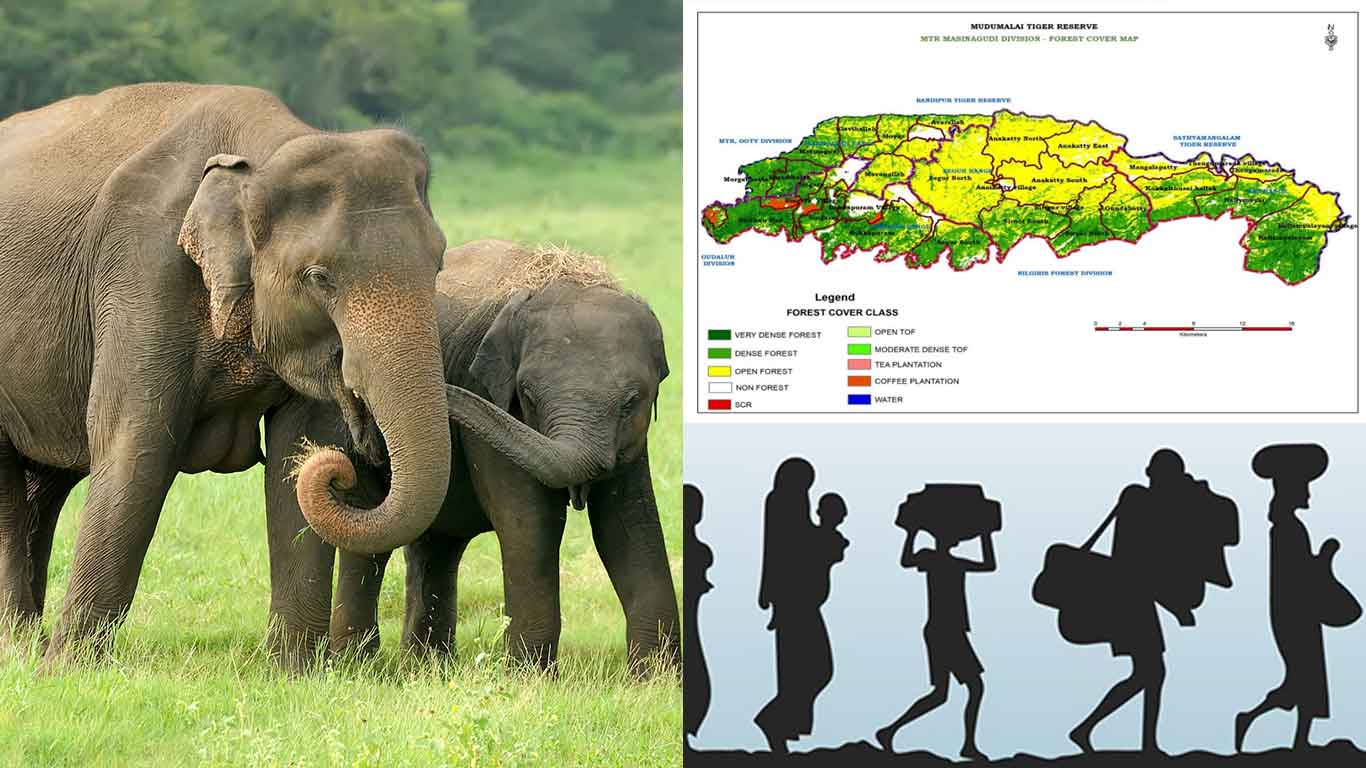In a bid to address the growing issue of human-elephant conflict, the Tamil Nadu Forest Department has identified 42 critical elephant corridors across the state. This initiative, outlined in a detailed 161-page report published on April 29, 2024, aims to create safe passage for elephants between fragmented habitats. However, the plan faces opposition from some political parties and residents in affected areas.
Report Highlights Rising Elephant-Human Conflict:
The report emphasizes the urgency of the situation, citing national statistics that over 500 humans and 100 elephants perish annually due to these conflicts. The document pinpoints a rise in such incidents within Tamil Nadu, particularly in Coimbatore, Gudalur, Sathyamangalam, and Hosur forest divisions. The proposed elephant corridors are presented as a potential solution.
Corridors Traverse Diverse Landscapes, Raising Concerns:
The identified elephant routes encompass various land types, including private lodges, highways, tea estates, agricultural fields, and residential areas. Notably, the plan includes 46 villages within the Gudalur block of the Nilgiris district. This inclusion sparked protests on May 13th, with residents expressing their disapproval by hoisting black flags at their homes and shops.
Understanding Elephant Corridors:
Elephant corridors are essential natural pathways that elephants rely on for safe movement between habitats. These typically long and narrow strips of land grant elephants access to vital resources like food, water, and breeding grounds. They play a crucial role in elephant population health by enabling genetic diversity and preventing inbreeding.
Elephant Population in Tamil Nadu:
The Tamil Nadu Forest Department's report also presents findings from the 2023 elephant census, revealing a total of 2,961 elephants across the state's 20 forest divisions. Mudumalai Tiger Reserve leads with 790 elephants (26.7%), followed by Sathyamangalam Tiger Reserve with 668 (22.6%) and Anamalai Tiger Reserve with 337 (11.4%). The remaining forest divisions harbor the remaining 337 elephants (11.4%).
Finding a Solution:
To address the escalating human-elephant conflict and explore additional elephant routes, a team led by V. Naganathan, Additional Principal Chief Conservator of Forests (Wildlife), Tamil Nadu Government, conducted a comprehensive study. This team of forest department officials and scientific experts has prepared a draft report outlining the "Tamil Nadu Elephant Corridor Plan."
The Proposed Elephant Corridors:
The team identified 42 elephant corridors spread across various forest divisions, including Hosur, Dharmapuri, Erode, Masinagudi, Gudalur, Coimbatore, Sathyamangalam, Kanyakumari, Tirunelveli, Thenkasi, Srivilliputhur, and Dindigul.
Report Details and Public Concerns:
The 161-page report categorizes the corridors based on their location relative to the Palakkad Gap - routes on the western side are separated from those on the southern side. It provides a comprehensive analysis, including details on elephant usage of various routes, the number of houses, agricultural lands, highways, tea plantations, temples, private establishments, and encroachments within the corridors.
Additionally, the report outlines the threats faced by elephants and proposes immediate and long-term actions for the government to take for their protection.
Crucial Corridor for Elephant Movement:
The report highlights a particularly critical elephant corridor. This corridor serves as a vital passage for elephants migrating between essential habitats in the Western Ghats (Wayanad, Nagarhole, Bandipur, and Mudumalai) and Bhavanisagar. This connectivity is crucial for gene flow between elephant populations as far east as Dharmapuri and Sathyamangalam with those migrating from the Western Ghats.
Therefore, this corridor acts as a critical link for elephants between the Eastern and Western Ghats, making it vital from a landscape perspective. The corridor essentially connects these two mountain ranges, allowing elephants to migrate from Nagarhole, Bandipur, and Mudumalai to Sathyamangalam, Bhavanisagar, and further eastward.
This initiative to establish elephant corridors presents a complex challenge. While creating safe passage for elephants is crucial for their conservation, addressing the concerns of local communities remains paramount. Finding a sustainable solution will likely require open dialogue and collaborative efforts between the government, conservationists, and residents.
Villagers Concern:
However, villagers in Gudalur and Masinagudi harbor deep anxieties regarding the potential implementation of the Forest Department's recommendations. They fear that these plans could lead to complete government control over these areas, potentially displacing residents whose families have lived there for generations.
Tamil Nadu forest department officials have refused to relocate families to create elephant corridors. They have stated that the proposed elephant corridor would be a narrow stretch of land and would not hinder the families living in the designated areas.
